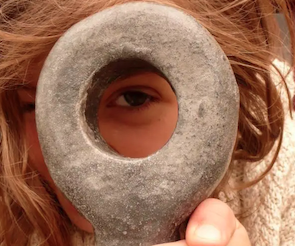Radiophonic Sound Artist.
Gregory Whitehead is an American sound artist, radio producer, and writer. His work focuses on experimental, abstract radio and sound art, blending unique soundscapes with storytelling to create an incredibly emotional and immersive experience for listeners.
I first came across Gregory Whitehead through his work “Pressures Of The Unspeakable”. He was invited to spend six weeks in Sydney, Australia working with the Australian Broadcast Corporation in the role of Dr. Scream and his Institute for Screamscape Studies. A 24 hour phone line named the ‘screamline’ was set up and people were invited to phone in their screams, thus creating his ‘screamscape’. Whitehead then used these screams to curate a rather beautiful, unsettling radio artwork.
“Pressures Of The Unspeakable” -1991
“In radio, not only is the voice separated from the body, and not only does it return to the speaker as a disembodied presence- it is, furthermore, thrust into the public arena to mix its sonic destiny with that of other voices.” (Whitehead, 1992, p. 253). After researching his work, I thought this quote of Whitehead’s expressed a main theme for his work as a whole. Gregory uses voice as a central element in the majority of his work, often deconstructing and manipulating them to create a new interpretation of the story. He focuses on this idea of the voice being a separate entity that exists independently, which is something that can only really be done through radio, (music and sound art pieces too) but compared to film, it’s an entirely different thing. In radio there is no visual context, or visual depiction to rely on, your brain almost has to work harder to understand what’s going on, the listener is using their own interpretation to create an image and relation in their head.
Whitehead’s work often has a rather eerie, haunting aspect to it, which, from my understanding, is what he wants to create, to show how disconnecting the voice from the body can create an unknown, entirely new sensation formed from a sense we use everyday. In his work, voice no longer belongs to a person but is floating in a disorienting soundscape. He manages to capture these incredibly uncomfortable atmospheres and plays around with them in ways that is very distinct to his work, using collage, layering and voice effects to create his radio style.
It’s all very physiological, both due to the fact that every listener will have a different perception of what they’re hearing, and also due to this separation of voice from the body that Whitehead talks about. Sounds link very closely to memories and traumas and so without the visual cues that TV and film give us, we relate the sounds to our own personal experiences to give what we’re hearing relevance and context. Whiteheads uses fragmentation to cut up the voice and orchestrate the story, and this disruption to the work not only represents and relates to the the mental fragmentations of our memories, but also gives you these periods of silence that your brain fills in the gaps for. And these gaps are filled with the relations made previously, relating the eerie, ambient noises to your own eerie, uncomfortable memories. -Thus enhancing the atmosphere even more, just through perception.
Shake, Rattle, Roll. -1993
“I used every category of material at my disposal, and every compositional and editing technique, explored in shorter castaways; digital audio tape was part of my studio by then, used in tension and interplay with my workhorse Otari reel-to-reels. To decay or not to decay, among my questions.”
Sound is used in his work to show how words and communication fail to fully capture the depth of our experience as humans, and that there are so many layers to our brain that hold intense emotions, that can’t really be accessed through speech alone. We need music and sound to reach and confront them. I have found a lot of inspiration through Gregory’s work, he works with these themes of memory and trauma that I am incredibly interested in and have already created multiple pieces of work on the subject matter. His work is incredibly complex and there are definitely aspects of our radio piece that are similar to Whitehead’s work, especially this idea of creating disconcerting spaces through speech. As we’re using this collaged script that doesn’t have any context, structure, or main theme to it, I think we will be able to create an atmosphere that does have an uncomfortable, slightly ominous feel to it.
Whitehead, G. (1992) ‘Radio as a prosthetic imagination’, Wireless Imagination: Sound, Radio, and the Avant-Garde, edited by D. Kahn and G. Whitehead, Cambridge, MA: MIT Press, pp. 253–270.
